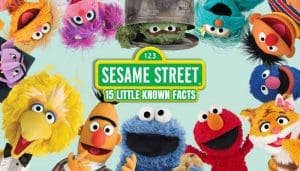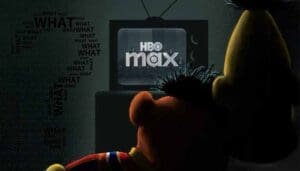For generations, the sun-drenched stoops of Sesame Street have stood as a bastion of childhood innocence. It is a place where counting to ten is an adventure, where the alphabet is a song, and where even a cranky monster living in a garbage can is a source of joy. But for the discerning viewer—the one who remembers the eerie quiet before a storm or the unsettling sadness in Big Bird’s eyes—a deeper, more complex narrative exists. Sesame Street, it turns out, has a dark side. Not a sinister, evil side, but a brave, occasionally baffling, and sometimes profoundly heartbreaking side. This is an exploration of the moments when a show dedicated to simple, joyful learning dared to venture into the unsettling, the scary, and the existentially sad.
The One They Banned: The Witch, the Basketball, and the Barometer of Fear
On February 10, 1976, Sesame Street took a creative gamble that would be forever immortalized in the annals of television history and childhood nightmares. Episode 847, now a notorious piece of rediscovered media, featured the one and only Margaret Hamilton reprising her role as the Wicked Witch of the West, complete with full green makeup and a terrifying cackle. This was not a friendly guest spot. This was a full-blown invasion, set to the tune of a “heavy metal riff” as she emerged menacingly from around the corner.
The plot, while simple, was a masterclass in psychological horror for a preschool audience. A strong wind blows the Witch’s broomstick onto Sesame Street, where it is caught by David. What follows is a series of escalating threats and bizarre encounters as the Witch tries to reclaim her property. The show’s creators intended the episode to teach children how to overcome their fears, but the execution proved to be a spectacular miscalculation. The Witch’s sinister promises—to turn David into a basketball and Big Bird into a feather duster—were not abstract threats; for a child, they presented a terrifying, visceral possibility of transformation. This was a far cry from the lighthearted lessons the show typically offered.
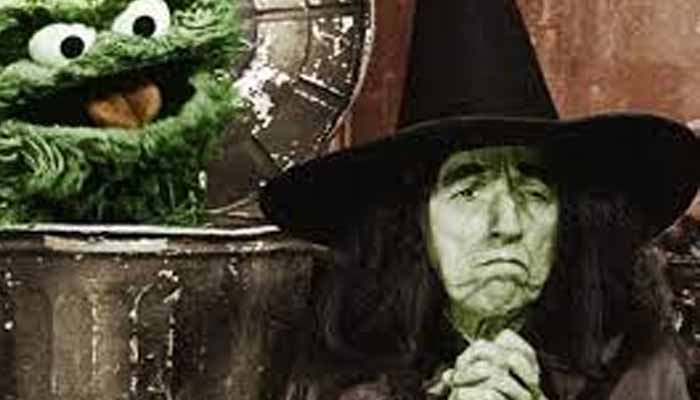
The episode’s tone veered wildly between the genuinely scary and the profoundly absurd. A prime example is the character of Oscar the Grouch, who, upon meeting the Witch, declares her “the most beautiful person” he has ever seen and confesses he is “in love”. This bizarre display of affection added a layer of surreal, deadpan humor to the terror. Equally disarming was the sight of Big Bird, the gentle giant of the street, arming himself with a baseball bat and a hockey stick and threatening, “Where’s that witch? I’ll fix her!”. This image of a Muppet vigilante is so jarring it borders on the hysterical. Finally, the segment contained a baffling, real-world reference when the Witch, offered a cup of coffee by David, refuses it by saying she “can’t stand the stuff”. This was a direct nod to Margaret Hamilton’s simultaneous role as a spokesperson for Maxwell House coffee, a meta-joke that was entirely lost on its intended audience but now provides a fascinating, if nonsensical, layer of context.
The immediate reaction to the episode was not laughter but a “barrage of negativity” from furious parents. The Children’s Television Workshop was inundated with letters describing “screams and tears” and detailing children’s new-found phobias. Some letters were even “riddled with Bible passages meant to admonish the creative team” for their choices. The creators had misjudged their audience. Unlike
Mister Rogers’ Neighborhood, where Margaret Hamilton had appeared without her makeup to demystify the character and explain that she was just an actress ,
Sesame Street had presented her in her full, menacing glory. The show’s high-risk strategy of confronting fear head-on backfired so completely that the episode was immediately pulled from syndication and never aired again. For decades, it existed only as a piece of “lost media” , a legendary tale whispered among a generation of traumatized adults, until high-quality copies eventually surfaced online, cementing its status as the most famously feared episode in the show’s history.
A Taxonomy of Sesame Street’s Darkest Moments
| Episode Title/Number | Year Aired | Type of “Darkness” | Key Plot Point | Audience Reaction |
| “The Wicked Witch” (#847) | 1976 | Fictional Horror | The Wicked Witch of the West terrorizes the street to get her broom back. | Banned after one airing due to parental backlash and complaints of “screams and tears.” |
| “Farewell, Mr. Hooper” (#1839) | 1983 | Real-World Grief | Big Bird learns that his friend, Mr. Hooper, has died. | Critically acclaimed and praised for its honest, empathetic handling of a difficult topic. |
| “A Fire on Sesame Street” (#2689/2690) | 1990 | Communal Disaster | A fire at Hooper’s Store devastates the neighborhood. | A realistic depiction of an emergency that taught children about safety and community support. |
| “A Hurricane Comes to Sesame Street” | 2018 | Communal Disaster | A hurricane destroys Big Bird’s nest, and the community helps him cope and rebuild. | Widely praised for its sensitive approach to natural disasters and property loss. |
| “Big Bird gives birth” | N/A | Internet Myth | Big Bird is rumored to give birth in a lost episode from 1984. | A viral urban legend that highlights the modern craving for unsettling content. |
The One That Broke Our Hearts: How Big Bird Learned About Grief and Took Us All With Him
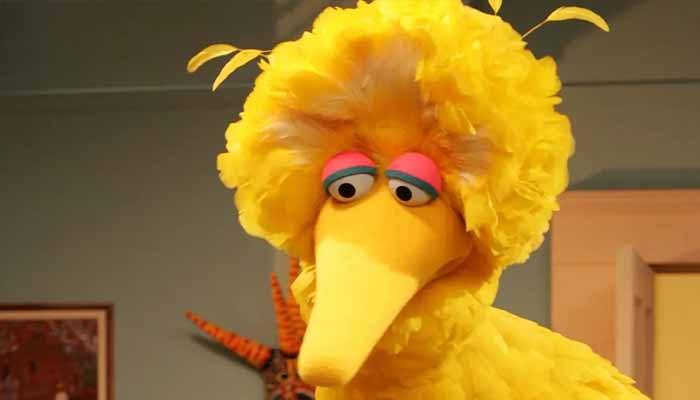
If the Wicked Witch episode was a cautionary tale about creative overreach, the death of Mr. Hooper was a masterclass in empathy and thoughtful execution. On Thanksgiving Day in 1983, Sesame Street aired a special episode, “Farewell, Mr. Hooper,” to address the real-life death of the beloved actor who played him, Will Lee. The production team, knowing they were treading on sensitive ground, embarked on a months-long process of meticulous preparation. They consulted with “child psychologists, religious leaders and other experts” in a process they called a “curriculum bath”. They also used focus groups to ensure their message would resonate with young viewers, and they strategically aired the episode on a holiday to ensure parents would be home to watch it with their children.
The episode’s climax is an emotional moment for television history. It is the scene where the adults on the street gently explain to a confused Big Bird that Mr. Hooper has died and will not be coming back. The scene was filmed in a single take because the cast members, still grieving the loss of their friend Will Lee, were too emotionally drained to perform it again. This raw, authentic sorrow gave the segment its profound and lasting emotional weight. The show made a deliberate choice to use the plain words “died” and “dead” instead of confusing euphemisms like “passed away”. They also avoided the common practice of using flashbacks or montages of the character, recognizing that for a young child, seeing a character move and speak would only confuse the reality of their absence. When Big Bird, in a moment of genuine heartbreak, asks why Mr. Hooper has to be gone, the adults offer a simple, honest, and profoundly secular truth: “Because… just because”.
The handling of this episode stands in stark contrast to the Wicked Witch incident. While the Witch episode was a high-risk gamble on a fictional monster, the Mr. Hooper episode was a meticulously planned and expertly executed lesson in real-world grief. The show’s creators understood that a fictional fear is something to be confronted, but real sorrow is something to be processed with empathy and support. By choosing to tell a difficult truth with unflinching honesty and care, the show not only provided an essential lesson for its audience but also solidified its reputation for bravery and emotional depth.
The Urban Legends of the Internet Age
In the modern era, the collective search for the “darkest” Sesame Street episodes has taken a strange turn. As the show has become more risk-averse, the internet has stepped in to create its own brand of unsettling lore. The perfect example is the viral myth of “Big Bird gives birth.” The research material reveals that this is not a lost episode but a bizarre, non-canonical rumor that has gained traction through sensationalized YouTube videos and frantic social media posts. The snippets show a panicked, almost hysterical reaction from a modern content creator who has conflated an old segment about preparing for a baby’s birth with a fantastical, gross-out scenario.
This phenomenon shows how the nature of “dark” media has evolved. The show’s creators once pushed boundaries with real, curriculum-driven episodes about fear and grief. But today, the most unsettling Sesame Street narratives are often a product of misremembered, out-of-context clips or outright fabrication. The fact that these rumors gain so much traction reflects a deep-seated need among nostalgic audiences for a Sesame Street that is as complex and unsettling as the world they now inhabit.
The Real-World Horrors: Fire, Floods, and Hurricanes on the Street
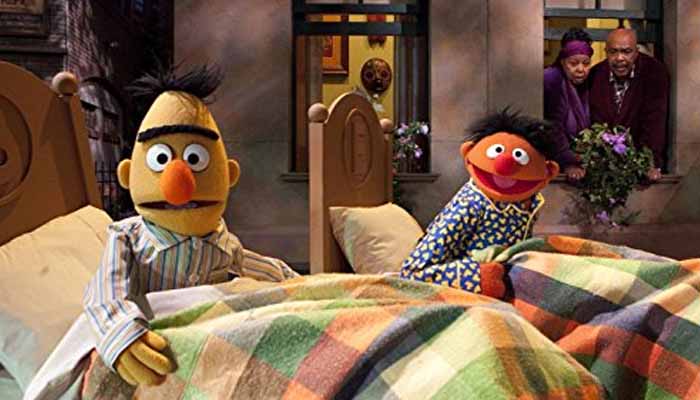
Beyond the sensationalism of witches and the profound sadness of death, Sesame Street has tackled a different, more grounded form of darkness: that of real-world disaster. Over the years, the show has aired episodes dealing with catastrophic events like fires, floods, and hurricanes. These episodes introduced children to a different kind of threat: not a menacing villain, but an impersonal force of nature.
In these segments, the darkness is less about a psychological scare and more about communal vulnerability. We see a fire nearly destroy Hooper’s Store, leaving Mr. Hooper devastated and his friends scrambling to help. We see a flood turn Ernie and Bert’s beds into makeshift sailboats, as Gordon and Susan try to stop a pipe from leaking. And in a more recent episode, a hurricane demolishes Big Bird’s nest, leaving him heartbroken, angry, and confused.
These episodes represent a maturing of the show’s core curriculum. The solution to these disasters is not a magical defeat of a monster but the quiet, painstaking work of a community coming together. The fire episode ends with Mr. Hooper’s friends comforting him and reassuring him that things will be fixed. The hurricane episode shows Big Bird’s friends talking to him, drawing pictures, and giving him hugs to help him cope with his feelings of loss before they rebuild his home. The lesson is not to conquer fear but to cope with hardship, a profound and necessary evolution from the Witch episode’s confrontational approach. The show moved from a pedagogical model of “conquer your fear” to one of “cope with hardship together,” a direct continuation of the empathetic legacy of the Mr. Hooper episode.
Conclusion
The “darkest” episodes of Sesame Street are not blemishes on its legacy but are, in fact, the most compelling arguments for its enduring importance. They prove that a show dedicated to simple truths about letters and numbers was brave enough to tackle complex truths about fear, grief, and the fragility of our world. The lessons from these episodes—whether from the terror of the Wicked Witch, the profound sadness of Mr. Hooper’s death, or the shared vulnerability in the face of disaster—prepared us for a world that is not always sunny. They taught us that it’s okay to be scared, to be sad, and to lean on our friends when things fall apart. They showed us that the best lessons are often found in the shadows, and that even a little darkness can illuminate a whole lot of light.


